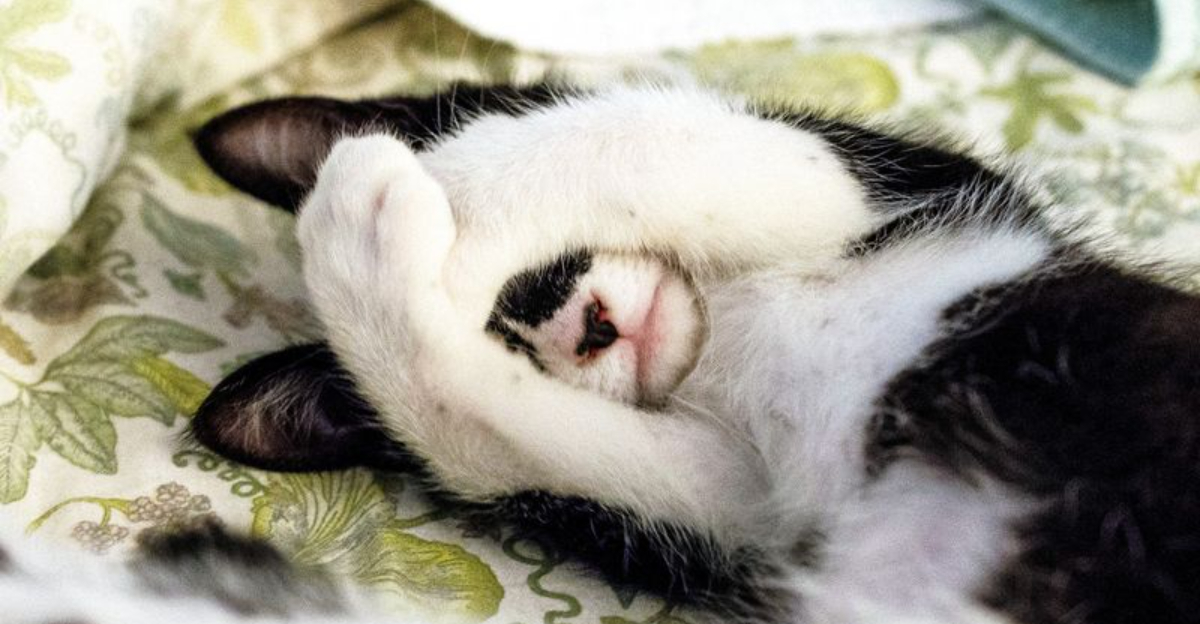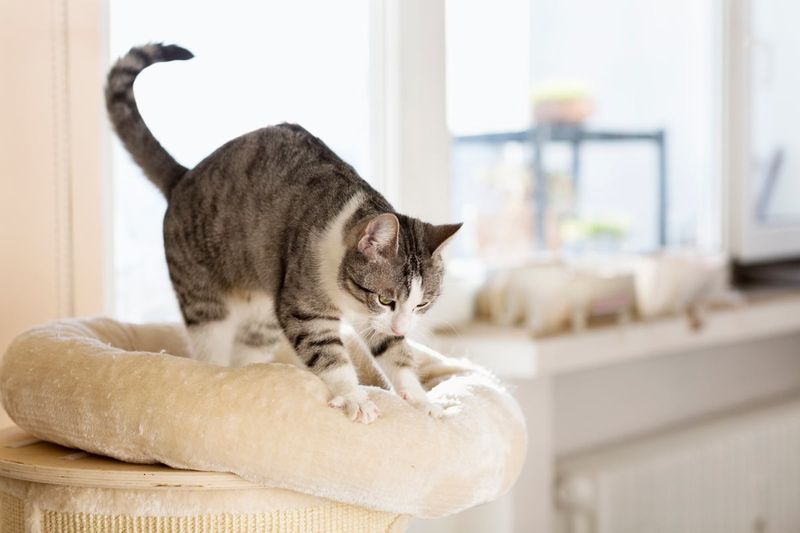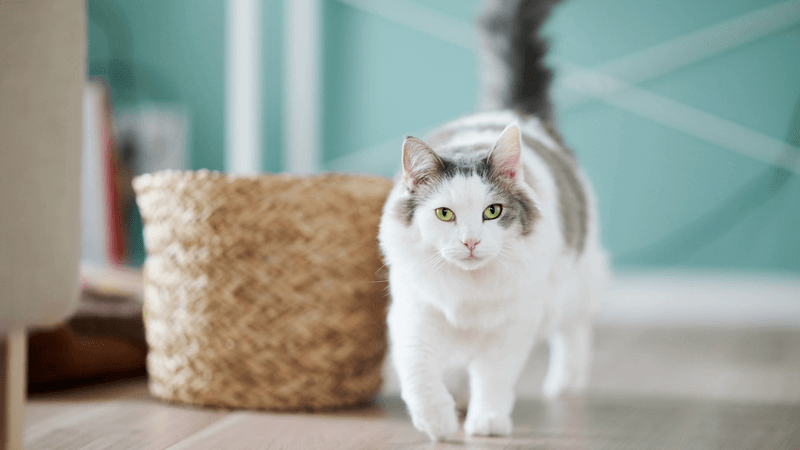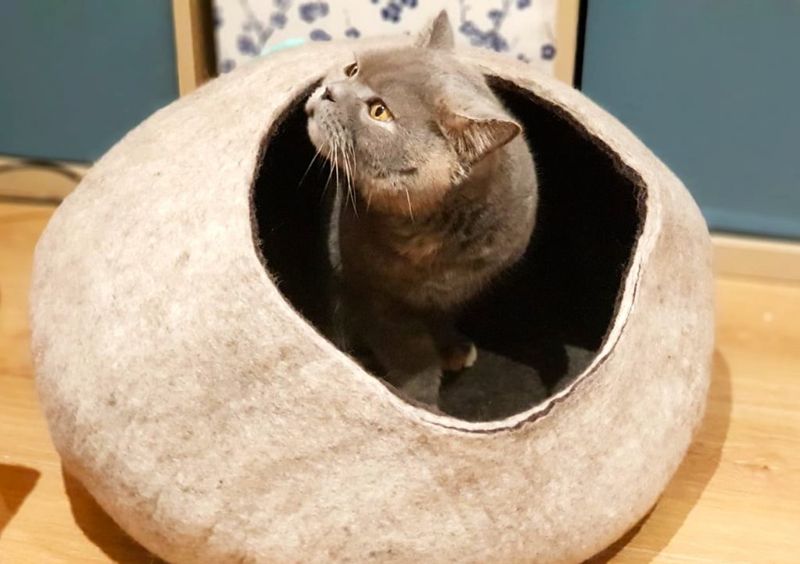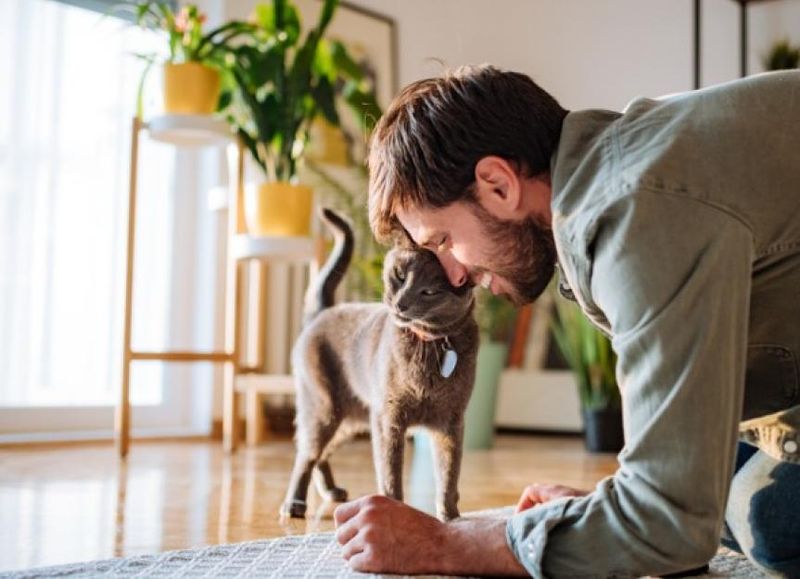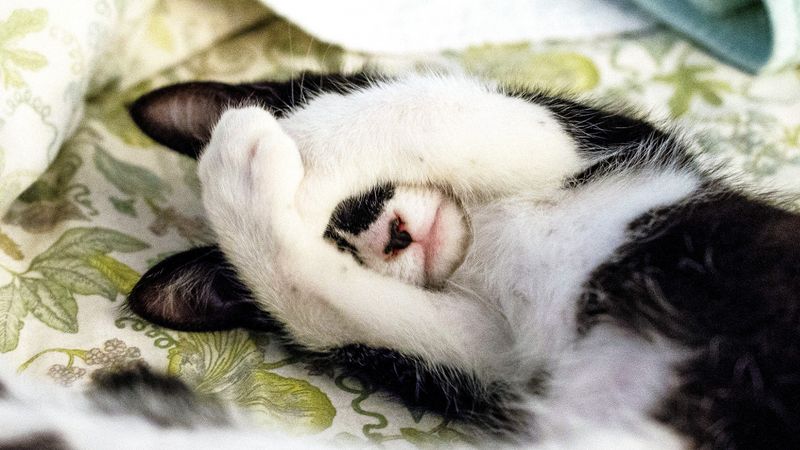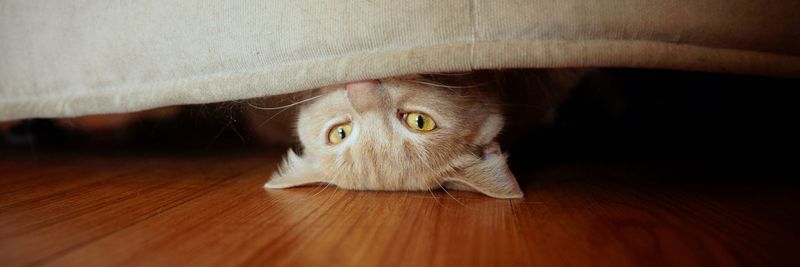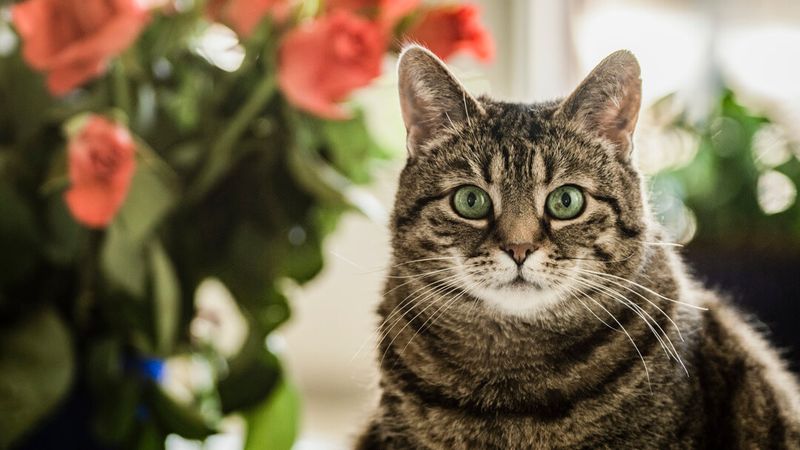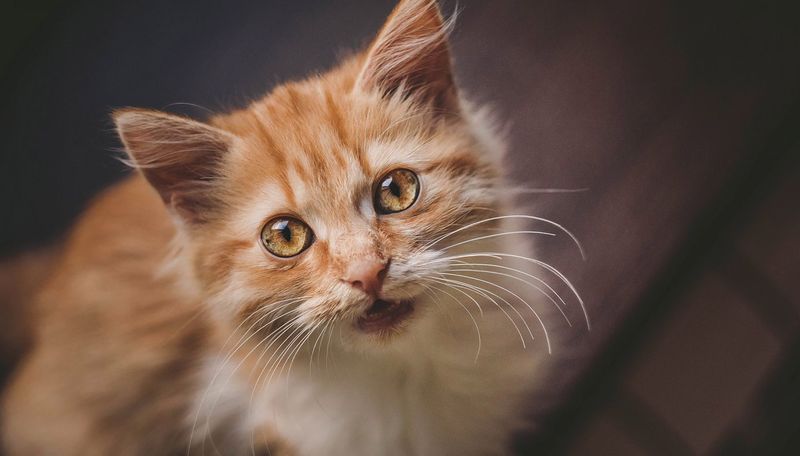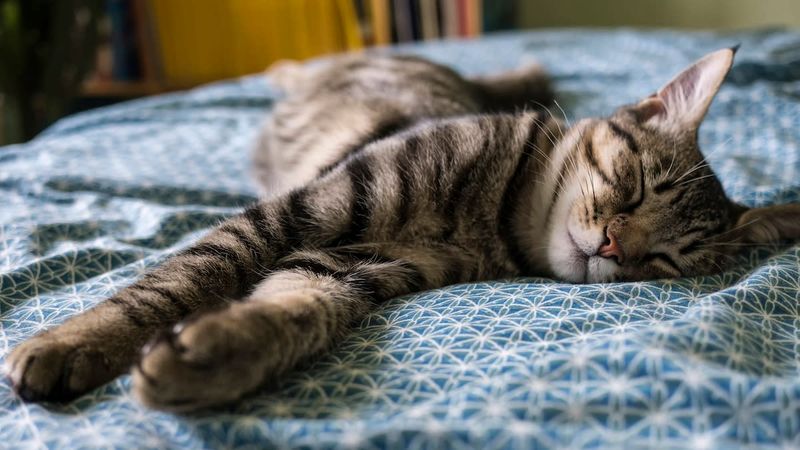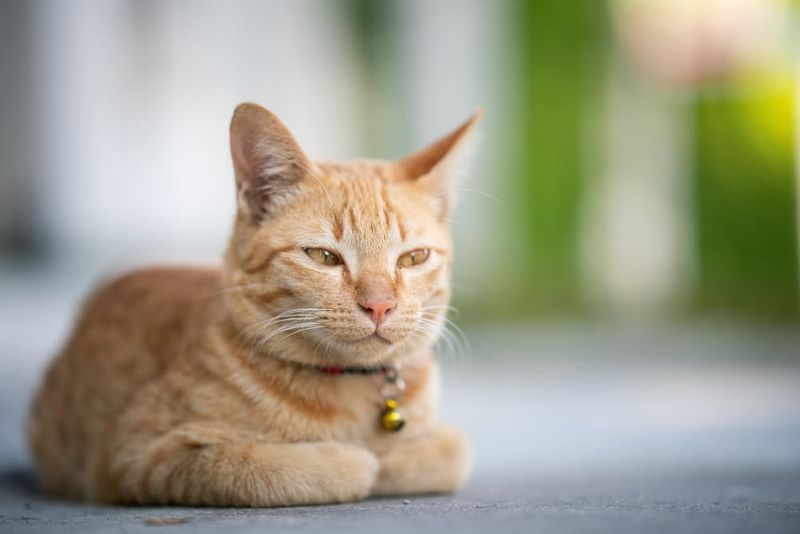📖 Table of Content:
- 1. Kneading with Their Paws (“Making Biscuits”)
- 2. Circling Their Sleeping Spot
- 3. Sniffing and Scratching the Area
- 4. Head-Butting or Rubbing Against Objects
- 5. Grooming Themselves (Sometimes Excessively)
- 6. Hiding or Seeking High Ground
- 7. Staring Off or Watching You Quietly
- 8. Vocalizing or Chirping Softly
- 9. Twitching Tail or Ears
- 10. Tucking Their Paws and Tail In (Loafing)
Cats are mysterious little beings with routines that often feel straight out of a fantasy novel. Whether they’re stretching dramatically across your favorite sweater or performing odd twirls before collapsing into a nap, their behaviors seem deliberate—even ceremonial. If you’ve ever watched your feline closely as they prep for snoozing, you’ll know they don’t just flop down and doze off like we do.
These sleep-time rituals aren’t just adorable quirks; they’re deeply rooted in feline instinct, emotion, and comfort. What might look like a random paw flick or a series of purrs actually signals contentment, security, or even ancestral instincts that date back thousands of years. Understanding these bedtime performances can give you surprising insight into your cat’s emotional and psychological world.
From kneading imaginary dough to whisper-meowing goodnight, every cat has its own bedtime story to tell. Let’s unravel the mystery of what your whiskered friend is really up to before dreamland arrives.
1. Kneading with Their Paws (“Making Biscuits”)
Gently pushing their paws into soft surfaces, cats perform what’s affectionately known as “making biscuits.” This rhythmic motion is more than cute—it’s a deeply ingrained behavior that stems from kittenhood. Nursing kittens knead their mother’s belly to stimulate milk flow, and the action becomes synonymous with comfort and nourishment. As adults, cats replicate this behavior when they’re relaxed and content, usually on blankets, beds, or even their humans. Some purr while kneading, further amplifying the cozy vibe. Over time, cats may even choose a specific “kneading blanket” as their favorite napping prep zone. While it might feel like a massage, for them it’s part meditation, part memory, and full comfort.
2. Circling Their Sleeping Spot
A few slow, deliberate circles before plopping down may seem odd—but it’s rooted in survival. Wild ancestors like African wildcats would circle to flatten grass and scare off insects or snakes before lying down. Today’s house cats have inherited this routine even if the threat is just a crumpled sock. Circling helps them assess the spot’s comfort, safety, and temperature with their keen senses. Sometimes, they circle more than once, adjusting their angle until the position is just right. This shows how meticulous and instinct-driven feline behaviors truly are. It’s nature’s version of fluffing the pillows before bed.
3. Sniffing and Scratching the Area
Before they rest, many cats investigate the area by sniffing and even scratching at the surface. Their noses are powerful tools, capable of detecting previous scents, food particles, or another pet’s recent occupation of the space. This inspection ensures the place is “theirs” and safe from uninvited company. Scratching may also deposit their scent via glands in their paws, turning the spot into a personalized comfort zone. Even in their own homes, cats need reassurance that this moment of stillness won’t be interrupted. The ritual also adds to their sense of control—an essential part of feline well-being. So when your cat paws the cushion before settling in, they’re claiming peace and territory in one go.
4. Head-Butting or Rubbing Against Objects
By pressing their forehead or cheeks into furniture—or your leg—cats are engaging in affectionate territory-marking. Scent glands located in these areas release calming pheromones that signal familiarity and trust. It’s their way of saying, “I belong here,” which offers emotional security before they let their guard down to sleep. Each rub is a gentle affirmation of their bond with their environment or with you. This behavior is often seen as a sign of love, but it’s also deeply practical in feline terms. Think of it as aromatherapy meets bedtime ritual. Your cat isn’t just showing affection—they’re setting the stage for a peaceful slumber.
5. Grooming Themselves (Sometimes Excessively)
Pre-sleep grooming isn’t vanity—it’s a soothing, purposeful act. Cats clean themselves meticulously to regulate body temperature, remove irritants, and prepare for a prolonged rest. Beyond cleanliness, grooming releases endorphins, which naturally calm and comfort them. You’ll notice they often begin with the face, moving to paws, chest, and tail in a near-ritualistic order. It’s their personal bedtime routine, akin to us brushing teeth and washing up. In some cases, over-grooming before bed may indicate stress or boredom, signaling an emotional component too. Regardless, it’s one of the clearest indicators that a cat is winding down for a nap.
6. Hiding or Seeking High Ground
Retreating to a tucked-away space or high perch isn’t just about preference—it’s about primal protection. Cats in the wild avoid predators by sleeping in concealed or elevated spots, and your housecat is no different in instinct. Even in secure homes, that need for strategic positioning remains. High places offer a panoramic view and a sense of control, while hiding spots offer solitude and safety. Often, cats rotate their sleeping areas based on mood or external stimuli. You may notice them vanish into closets one week and perch on top of cabinets the next. Wherever they go, their aim is the same: restful, undisturbed sleep.
7. Staring Off or Watching You Quietly
Fixating on a point or staring silently before dozing may seem eerie—but it’s normal for a hyper-aware creature like a cat. They’re naturally alert even during their wind-down phase, monitoring the environment for changes in light, sound, or movement. Watching you might also be a sign of affection or curiosity—they’re making sure you’re safe too. This lingering eye contact is often accompanied by slow blinking, a feline sign of trust. Think of it as a soft “goodnight” gaze, blending caution with closeness. Once they determine all is calm, their eyelids start to droop. And just like that, they slide into slumber while still half-listening.
8. Vocalizing or Chirping Softly
Soft chirps, mews, or trills before settling down are subtle ways cats communicate readiness to rest. These sounds often appear when they’re near a human or another pet they trust. It’s their way of announcing contentment or requesting quiet companionship. Unlike urgent meows, these vocalizations are low-volume, almost musical. They’re soothing, both to the cat and the listener—like a lullaby wrapped in fur. Vocal cats may even “talk themselves to sleep,” narrating the transition from alert to relaxed. Listen closely, and you’ll hear your cat’s bedtime song.
9. Twitching Tail or Ears
Tiny flicks of the tail or twitching ears aren’t signs of irritation—instead, they reflect a still-engaged brain. Even as a cat gets cozy, their predator-prey wiring keeps sensors on standby. The tail acts like a barometer, adjusting as the cat shifts between wakefulness and sleep. Ears swivel to track sounds, often long after their eyes have shut. This means they’re in light sleep or preparing for deeper rest. It’s a sign your cat is almost—but not fully—at ease. Once those movements stop, you’ll know they’ve finally surrendered to sleep.
10. Tucking Their Paws and Tail In (Loafing)
Curling into a “cat loaf” is a cozy position that speaks volumes. It’s efficient, warm, and allows for a quick getaway if needed. Cats use this posture during light naps when they’re resting but still alert. Their limbs are tucked in, preserving body heat and minimizing vulnerability. Some even keep their eyes half-open in this phase, as if multitasking between nap and surveillance. You’ll often find them loafing in sunspots, on soft cushions, or close to their humans. This pose says: “I’m comfy, I’m safe, and I’ll be here a while—but I can bounce if I need to.”
